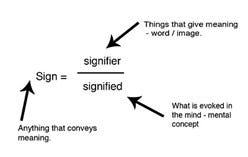The Lorem Ipsum Paradox
dolor sit amet, consectetur adipiscing elit. Sed consectetur leo eget velit pellentesque.
A Brief History of Lorem Ipsum
Applying Saussurean Terms
The Paradox of Putting it in Other Words
The Hollow Russian Z
A Brief History of Lorem Ipsum
Lorem Ipsum is a textual placeholder, a fake, dummy Latin that is supplied in text boxes, graphic design templates, and empty websites to signal where real text will go. As the ratio of letters is similar to written English, Lorem Ipsum supposedly looks more neutral, and generative than an instructional default like ‘insert type here’ or ‘content here.’
Jack Shepherd compares Lorem Ipsum to a movie stand-in who helps the gaffer set up the lighting for the real actor. As with the film example, when you look out for it, you may start to notice Lorem Ipsum that has accidentally made its way onto websites, labels, and products in the place of actual copy.
The use of a dead language — semantically deconstructed so that even those with a knowledge of Latin cannot pick out meaning — is meant to detract any value from the words themselves. Lorem Ipsum was assumed nonsensical until 1982 when Latin professor Richard McClintock reverse searched ‘consectetur’, one of the text’s more esoteric terms, and traced his findings back to a definitive source.
Lorem Ipsum is a scrambled version of Cicero, lifted from his ‘De Finibus Bonorum et Malorum.’ The default opening line ‘Lorem Ipsum’ is drawn from passage 1.10.32: “Neque porro quisquam est, qui dolorem ipsum quia dolor sit amet, consectetur, adipisci velit, sed…”
In the 1914 translation for Loeb Classical Library, Harris Rackham translated these lines as: “Nor again is there anyone who loves or pursues or desires to obtain pain of itself, because it is pain, but occasionally circumstances occur in which toil and pain can procure him some great pleasure.” Odd, that this poetic denial of masochism should become the language of nonmeaning.
As part of his research, McClintock noted that Lorem Ipsum dates back to the printing culture of the early 1500s, where some unknowable printer created the dummy text for their type specimen book. The paper trail for this claim is unclear and is now bandied about in all historical accounts.
It was likely the use of Lorem Ipsum in 1960s Letraset campaigns that led to its universal use in the digital age. It is notable for recurring on software like Canva, HubSpot, and Aldus, forever signalling the potential of what might replace it.
Applying Saussurean Terms
Ferdinand de Saussure psychologised the field of semiotics, with the theory that meaning arises from the combination of a visual or aural signifier and the signified concept it gives rise to. The word ‘Tree’ is the signifier; the concept of a tree evoked in the mind is the signified. Together they make a ‘sign’ that conveys meaning.
Signifier and signified have an arbitrary relationship; there is no causal or logical connection between the word ‘tree’ and the organism it evokes. Conversely, the relationship is non-arbitrary for onomatopoeia, icons (like hieroglyphics), and symbols (where meaning is supplied by shared sentiment). In one sense Lorem Ipsum strives to avoid sign status and convey no meaning. Yet on a symbolic level, in its expectation of new text, Lorem Ipsum signals the potential for infinite meanings to evolve.
The terminology all chimes too much to sound succinct, but in Lorem Ipsum text, the signifier lacks any concrete signified but signifies the process of signification itself; the signified is delayed and instilled in the general potential of language that is heralded in at the moment that Lorem Ipsum is overwritten.
The Paradox of Putting it in Words
This unique semantic surrogacy is captured in the following poem:
For four centuries it’s been reset,
Letter for letter of fidelity and habit,
Holding a place for text and borders and to model
The new font finery. Greek, compositors call it.
Meaning: nothing, nonsense. But it’s a snatch of Cicero and it says
There is no one who loves pain itself, who seeks after it
And wants to have it simply because it is pain.
Still there are the great cliffs and beyond them the sea.
(‘Lorem Ipsum Dolor’ by Elizabeth Keyes, Technical Communication, Vol. 40, No. 4, Special Issue: Visual Communication)
The ambiguity of ‘Meaning’ at the opening of line 5 captures the crux of the Lorem Ipsum paradox. The promise of meaning (intensified further if you read the word as an explicatory present participle rather than a noun) is immediately nullified by “nothing, nonsense.” The chasm of non-signification is driven home by the half-rhyme framing the colon. The irony that crafted language fails to express the significatory potential of dummy text emphasises Lorem Ipsum’s intangible existence between meaning and non-meaning.
The only publicly available thesis on this topic is Kaylen E. Goodman’s Lorem Ipsum, Language and Its Non-meanings (2019). In this 60-page work, the Latin term arises three times: on the title page, in the dedication, and in the title of the abstract. Even when positioned as the object of study, the phenomenon only exists in a titular role, signifying a potential for analysis in which it does not then play a part.
The Hollow Russian Z
Sarah Ogilvie, author of The Dictionary People (2023) recently wrote a piece on the Russian army’s appropriation of the letter Z for Prospect magazine. Hoisted on flags and spray painted on tanks, ‘Z’ has become a symbol of Russian militarism. Ogilvie probes two possible origins of the ‘Zwastika’, considering it as an initialisation of ‘Zapad’ (the western division of the Russian army) and as a military icon to prevent friendly fire. Whether intentional or not, Z is a clear statement of finality for the Western world.


As Russian and Ukrainian both use the Cyrillic alphabet, this isolated Roman letter is devoid of signification. However, with the consequences unfolding in its wake, Z has become loaded with the potential for meaning, much like the bastardised Latin of Lorem Ipsum serving as a place-holder for English text.









